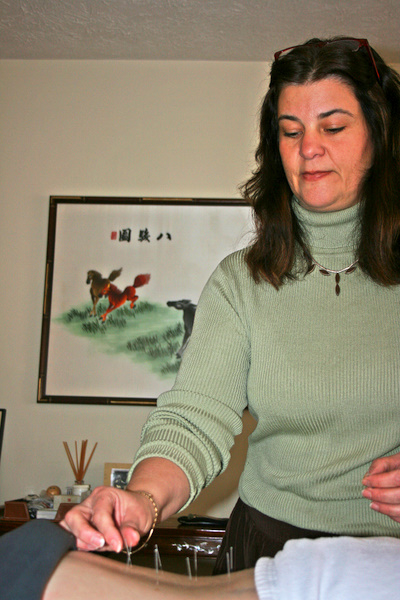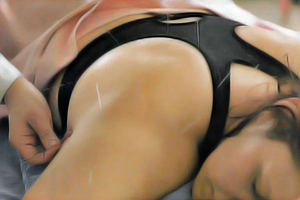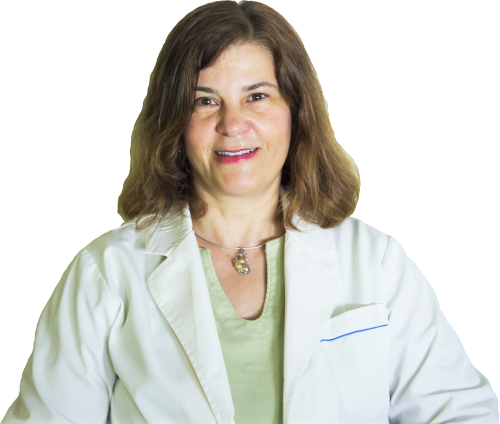Acupuncture has been used in China for at least 2,000 years to treat a variety of disorders. The use of acupuncture for the treatment of drug addiction was discovered serendipitously in 1972 by Wen, a Hong Kong neurosurgeon conducting a series of studies on the analgesic properties of acupuncture. Heroin addicts who volunteered to be subjects reported that their opiate withdrawal symptoms were lessened on the days when they received their acupuncture treatments. Wen undertook a series of uncontrolled studies on the use of acupuncture in the treatment of opiate addiction and reported positive results. Over the last 40 years, numerous studies have been undertaken investigating acupuncture for the treatment of various addictions, including opiates, tobacco, and alcohol. Many of these studies report beneficial effects of acupuncture. Not infrequently however, investigations of acupuncture for the treatment of drug addiction suffer from problems of design and assessment.
 Mechanism of Acupuncture
Mechanism of Acupuncture
The mechanism by which acupuncture may constitute a treatment for chemical dependency has not been fully investigated, although it has been conjectured that acupuncture, perhaps mediated by the release of endogenous opioids, modulates neural circuits in the mid-brain also affected by drugs of abuse. Han JS, Zhang RL (1993) Drug and alcohol Dependence(USA) 31, 169-175 Traditional Chinese theories of acupuncture involving ‘the rectification of chi deficiency or excess in various organ systems’, have not been adequately tested with in Western biomedical frameworks. In 1993 the HANS Acupoint Nerve Stimulator was used to treat 212 heroin addicts subjected to abrupt abstinence. Diagnosis was made according to the Diagnostic and Statistical Manual of Mental Diseases, third edition. The results from that study indicated that the mechanisms of HANS for heroin detoxification may be two fold:
- The release of endogenous endorphins and enkephalins by 2Hz may substitute the need for exogenous opioids
- The release of dynorphins by 100Hz may suppress the withdrawl syndrome.
The use of HANS in the post-detoxification period may help to prevent the recurrence of drug abuse, which may be even more important than its role in acute detoxification.
U.S. Studies
Auricular acupuncture is an increasingly popular intervention for the treatment of cocaine addiction in the United states.
Currently, approximately 200 clinics, in 32 states, offer auricular acupuncture for the treatment of this disorder (Smith 1991). Despite its increasing popularity, auricular acupuncture has been evaluated in relatively few studies for the treatment of cocaine addiction Lipton et al., 1992; Margolin et al., 1992; Smith,1988.
Clinical reports suggest that auricular acupuncture induces a feeling of relaxation that reduces craving for cocaine and facilitates patient participation in counseling and rehabilitation.
To the best of our knowledge, the literature contains only two controlled studies of acupuncture for the treatment of cocaine addiction. One study conducted at Lincoln Hospital, D. Lipton,V. Brewington, and M. Smith, unpublished data and the second one from the Substance Abuse and Treatment Unit, Department of Psychiatry, Yale University school of Medicine.
Cocaine use was determined by urine toxicology screenings. Depression was assessed by using the Beck depression inventory. Self-representation was assessed using the modified selves Questionnaire etc.
The authors report a positive finding for acupuncture insofar as subjects who received real acupuncture and remained in treatment for over 2 weeks had significantly lower levels of benzoylecgonine in urine screens compared to the placebo group. Sixty-one percent of women and 36% of men who entered the study completed the entire 8-week course of acupuncture treatment. All of the women and 60% of the men who completed the study attained abstinence. Among the HIV-positive patients 38% completed the study, of these individuals 83% attained abstinence.
In the pharmacotherapy trial, retention in treatment was excellent, and abstinence rates were modest. In the acupuncture study, the retention rate was lower, but the patients who remained in treatment did extremely well. No subject reported dropping out of the studies because of an adverse response to acupuncture treatments.
Subjects who attained abstinence in these studies exhibited decreased Beck Depression Inventory scores, a shift in self-representation away from “addict” and toward desired “non-addict” self-schemata, decreased craving, and increased aversion to cocaine cues.
Concluding Remarks
In views of the widespread use of acupuncture in the treatment of drug addiction and the relative success of previous studies it is my opinion that this procedure warrants further controlled investigation as a treatment for cocaine addiction in opiate populations.
Because of the unique history of modern China, traditional medicine has been the subject of comprehensive study and testing over the past forty five years.Western clinical studies of traditional Chinese medicine, by proving its practical efficacy, have helped it win its battle for survival in the twentieth century, and promise it a place in the future of medicine.
Some English-Language Sources
Han JS, Zhang RL (1993) Drug and alcohol dependance (USA) 31, 169-175
Chen XH, Han JS (1994) American Journal of Acupuncture 22, 47-53
Department of Philosophy of Medicine and Science, comp. Theories and philosophies of Medicine. New Delphi: Institute of History of Medicine and Medical Research 1973.
Fung, Yu-Lan. A History of Chinese Philosophy. 2 vols. Translated by Derk Bodde. Prinston, N.J.: Prinston University Press 1973.
Huard, Pierre, and Wong, Ming. Chinese Medicine.New York, Toronto: World University Library, McGraw-Hill, 1968.
Leslie, Charles, ed. Asian Medical Systems. Berkeley, Calif.: University of California Press.
Porckert, Manfred. The Theoretical Foundations of Chinese Medicine. M.I.T. East Asian Science Series, Vol. 3. Cambridge, Mass.: M.I.T. Press, 1974.
Ted J. Kaptchuck. The Web That Has No Weaver. Congdon & Weed, Inc, New York, 1983.
Mayer, D.J., Price, D.D. Rafii, A.1977. Antagonism of Acupuncture Analgesia in Man by Narcotic Antagonist Naloxone. Brain Research. 121:368-72.
Mayer, D.J., Price, D.D. Rafii, A.1975.Acupuncture Hypalgesia:Evidence for activation of a central control system as a mechanism of action. First World Congress Pain Florence, p.276 (abstr)
Mc Leennan, H., Gilfillan, K, Heap, Y. 1977. Some Pharmacological Observations on the Analgesia Induced by Acupuncture in Rabbits. Pain 3: 229-38.
Han, C. S., Chou, P.H., Lu, C.C., Jen, M. F. 1979. The Role of Central 5-hydroxytryptamine in Acupuncture Analgesia. Sci. Sin. 22:91-104.
Mayer, H.L., Price, D.D. 1976. Central Nervous System Mechanisms of Analgesia. Pain 2:379-404.
Han J.S., Terenius L 1982. Neurochemical Basis of Acupuncture Analgesia. Ann. Rev. Pharmacol. Toxicol. 22:193-220.
Liu X. 1986. The Role of Nucleus Raphe Magnus in Acupuncture Analgesia and its Control by Some Higher Analgesia Structure. Acupuncture Research 9:91-100.
Links:
http://www.acupuncture.com/conditions/acuaddict.htm
http://biblioteca.universia.net/ficha.do?id=5309729
http://acudetox.com/
http://acupuncture.com/research/addiction.htm
Reproduced with permission from the Lafayette Joural and Courier, HEALTH & FITNESS, TUESDAY, MARCH 23, 2004

Dr. Angelica Kokkalis inserts acupuncture needles into Serene Ross, a Purdue graduate who is expected to throw javelin in the summer Olympics. Ross is rehabilitating from surgery on a torn ligament in her throwing arm.
It’s “not voodoo; it’s another way of healing,” says Ross, who underwent surgery to mend a torn ligament in her throwing arm.
Her coach, Purdue javelin coach Rodney Zuyderwyk, says he’s confident she’ll make the U.S. team that will compete in Athens in September. This past winter, she was throwing rubber-tipped practice javelins indoors further than she did at the same point in 2002.
“Everything is strong, and her technique is better than it used to be,” he says.
In 2002, Ross, of West Lafayette, became the NCAA champion with a throw of 195 feet, 8 inches, shattering the American record of 192 feet, 3 inches. Less than a month later, she won the U.S. Championships with a throw of 197 feet.
“I was on fire,” says Ross, now 26 and a rock-solid 5 foot 10, 207 pounds. “I’d step onto the runway, and no one wanted to be there. After one throw at the (U.S. Championships) it was over.”
At the World Cup in Madrid in September 2002, she opened with a throw of 183 feet. On the second throw, she dropped her light arm too much, came over too hard on her left leg and felt a “pop” in her right elbow. She made two more throws and finished fifth in the world.
The 2002 Purdue graduate continued to train, but suspected that something was wrong. Doctors found that she had torn the ligament in her throwing arm.
“I thought, ‘This is not happening,’ ” she says.
In December 2002, surgeons mended her elbow with ligament taken from her leg. When the bandages came off, her world-class arm was withered and weak. Previous injuries to her knee and back hurt. Barely able to walk, she was depressed and withdrawn. She didn’t want to talk about it.
“I was a mess,” she says. “I felt I was losing everything.”
But ever the competitor, Ross has spent more than a year get-ting better through rehabilita-tion, throwing, weight lifting, massage, chiropractic and acupuncture.
Her strategy is simple, she says: “You visualize where you need to be, and you put all your cookies in one jar.”
“She’s gone through a pretty rigorous rehabilitation. There’s been a slow progression, week to week,” Zuyderwyk says. “That competitive spirit is definitely what motivates her.”
Ross is $40,000 in debt and soliciting donations to pay her expenses to meets in Texas and Kansas in April. A good showing there would qualify her for the U.S. Olympic Trials July 9-11 in Sacramento, Calif.
The top one, two, three or four javelin throwers there will represent the United States at the 2004 Olympics this fall.
“I am so ready to go,” Ross says. “I need to get out on the runway and throw.
I’ve been out so long, but I’m still Number 2 in the nation. Only one person has beaten 197 feet,” she says.
Kim Kreiner, a 2000 Kent State University graduate, had a throw of 199 feet, 8 inches in August 2003.
A native of Edinburg, Pa., Ross took up the javelin in 10th grade. At Purdue, she was Big Ten champion twice and a four-time AU-Amer-ican. She always dreamed of competing in the Olympics.
Ross credits acupuncture for much of her recovery. She was introduced to it in California, where she underwent rehabilitation at the Olympic Training Center.
In April 2003, she was referred to West Lafayette’s Dr. Angelica Kokkalis.
“We have an unbelievable relationship as doctor-patient and as friends,” Ross says of Kokkalis. I’ve made unbelievable progress. I feel more balanced, more centered. I’ve healed.”
Kokkalis inserts approximately 60 super-fine disposable acupuncture needles into various parts of Ross’s skin, at different angles. They stimulate the nervous system and its energy to release substances to the blood that kill pain and reduce inflammation.
As the needles are inserted, Ross feels heat and sensations of energy movement, but no pain. She leaves feeling refreshed and relaxed.
Kokkalis is a doctor of Oriental medicine, specializing in pain control and wellness management. She has a practice at Meridian Health Care in Lebanon.
She spent years in China, learning traditional Chinese medicine and formerly was director of Chinese medicine at the Center for Complimentary Medicine and Pain Management at St. Vincent’s Hospital in Indianapolis.
Speaking of Ross, Kokkalis says, “She not only was Number 1, she still is. Her recovery is a miracle.”
Ross’s Olympic dream has provided a motivator like no other.
“She wouldn’t have recovered if she didn’t want this,” Kokkalis says.
A native of Greece, Kokkalis will accompany Ross to Athens if she makes the team so acupuncture treatments can continue.
Ross works out at Purdue, where Jim Lathrop is her weight coach.
She turns to Michael Tebo for massage therapy. Michael Haville is her chiropractor.
“She has put in a lot of hard work, and she has been very patient,” says Zuyderwyk, who works with her almost daily. “That competitive spirit is what allows her to not hesitate when other people with that kind of injury would protect themselves.”
Throughout, he says, “the Olympics has basically been her drive, getting ready for the Olympics … she is on track:”
As the U.S. trials get closer, she’s determined to stay focused, get plenty of sleep and concentrate on staying healthy and strong. She’s a volunteer coach at Purdue.
She says herjob as a part-time social worker with Community Ventures in Living is providing an invaluable perspective. She helps handicapped people with basic living skills.
“I’ve become more thankful,” Ross says. “Some of these people can’t get out of their chair. Some can never walk or even talk.”
She calls the last Yk years of her life “a hard road,” but she’s convinced that it all happened for a reason.
Because of her injury, she has overcome challenges, grown stronger and made priceless friendships.
“I have to do this,” she says.”… the competitor in me won’t die.”
Acupuncture Analgesia
Over forty years of research have been devoted to Acupuncture Analgesia. On November 3rd 1997, the National Institute of Health sponsored a NIH Consensus Development Conference to evaluate the scientific and medical data on the uses, risks, and benefits of acupuncture procedure for a variety of conditions. Most of the research was on diverse pain conditions. Since 1965 the research team of Professor Jisheng Han, of Beijing Medical University Health and Science, has devoted themselves to the clarification of the neurochemical mechanisms of pain relief by acupuncture. Over 300 scientific papers have been published in the past 4 decades.
The ancient healing art of acupuncture seems to be revitalized in the era of modern medical sciences due to the identification of its high costeffectiveness and the partial unraveling of its scientific mechanisms of action. Hubei Science and Technology Press has published in 1998, in English, the summary of the research achievements on the Neurochemical Basis of Pain relief by Acupuncture obtained in the years 1987-1997 by Professor Jisheng Han. The use of modern scientific methodology is absolutely essential for the clarification of the scientific basis of acupuncture therapy. Research on the physiology of acupuncture has been contributing to the development of neuroscience from the molecular level to the behavioral. High-quality scientific research will certainly pave the way for the acceptance and more popular use of acupuncture and related techniques for the benefit of patients suffering from chronic pain and many other functional disorders.
Commonly treated conditions:
Based on clinical experience, the World Health Organization advises that over 300 types of illness lend themselves to acupuncture treatment. A partial list includes:
Gastrointestinal Disorders
Food allergies, indigestion, diarrhea, constipation, anorexia, peptic ulcer, gastritis, colitis, irritable bowel.
Urogenital disorders
Urinary tract infections, incontinence, prostatitis, sexual dysfunction, infertility.
Gynecological Problems
PMS, menstrual difficulties infertility, fibrocystic disease, menopause problems.
Respiratory Problems
Asthma, emphysema, allergies, chronic bronchitis, sinusitis.
Muscle and Joint Pain
Arthritis, tendonitis, bursitis, neck and shoulder pain, whiplash, sciatica, TMJ
Circulatory Disorders
High blood pressure, angina, muscle cramps, anemia, atherosclerosis.
Immune System Disorders
Chronic fatigue syndrome, AIDS, rheumatoid arthritis, candidiasis, lupus.
Endocrine Disorders
Diabetes, hyper/hypothyroidism.
Emotional Problems
Stress, insomnia, depression, anxiety.
Addictions
Alcohol, nicotine, sugar, recreational drugs, medications.
Pediatrics
Bedwetting, hyperactivity, asthma.
Ancient but Still Alive
The Inner Classic of the Yellow Emperor is the Source of all Chinese Medical Theory. Complied by unknown authors between 300 and 100 B.C., it is the oldest of the Chinese medical texts. Acupuncture was introduced to Korea and Japan during the period 420-589 A.D. The first book about acupuncture, translated into Dutch and Latin, appeared in the West during the 15th Century.
Europeans, most notably the French, have been involved in acupuncture therapy for the last 300 years.
Acupuncture has been known in the United States for hundreds of years as well. Benjamin Franklin, during his career as Ambassador to France in 1781, received acupuncture treatments and even did experiments with it. After Nixon visited China in 1972, widespread interest in this healing art was revived in the United States.
